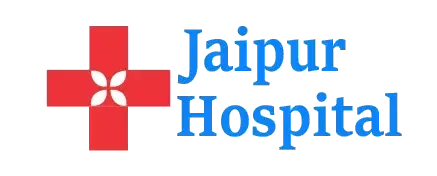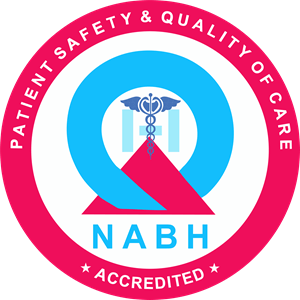What is Narcolepsy?
Narcolepsy is a chronic neurological disorder that affects the brain’s ability to regulate sleep-wake cycles. Its features include excessive daytime sleepiness, irregular and unpredictable episodes of daytime sleepiness, and pauses in the transition between alertness and various sleep stages. People with narcolepsy commonly have a wide range of symptoms that can significantly affect their daily lives.
Symptoms of Narcolepsy
Narcolepsy is characterized by a combination of symptoms that can vary in severity from person to person. The primary symptoms of narcolepsy include:
Excessive Daytime Sleepiness (EDS): Individuals with narcolepsy experience an overwhelming and persistent sense of drowsiness and fatigue during the daytime. This excessive sleepiness can lead to difficulty staying awake and alert, especially in situations that require concentration or attention.
Cataplexy: Cataplexy is a sudden and temporary loss of muscle tone triggered by strong emotions, such as laughter, surprise, or anger. During a cataplectic episode, muscles may become weak or limp, leading to physical symptoms ranging from slight weakness in facial muscles to complete collapse of the body. Emotional triggers for cataplexy can vary between individuals.
Sleep Paralysis: The brief incapacity to move or speak when falling asleep or waking up is known as sleep paralysis. The disturbance of the typical transition between alertness and REM sleep causes this phenomenon to happen. Hallucinations can be extremely vivid for those who are experiencing sleep paralysis.
Hypnagogic and Hypnopompic Hallucinations: These hallucinations occur during the transition between wakefulness and sleep. Hypnagogic hallucinations occur as individuals are falling asleep, while hypnopompic hallucinations happen as they are waking up. These hallucinations can involve vivid sensory experiences, such as seeing, hearing, or feeling things that are not actually present.
Fragmented Nocturnal Sleep: People with narcolepsy often experience disrupted nighttime sleep, with frequent awakenings or transitions between sleep stages. This fragmented sleep can contribute to their daytime sleepiness and overall fatigue.
It’s important to note that not everyone with narcolepsy experiences all of these symptoms. Some individuals may primarily have excessive daytime sleepiness without other prominent symptoms, while others might experience a combination of symptoms including cataplexy, sleep paralysis, and hallucinations.
Causes of Narcolepsy
The exact cause of narcolepsy is not fully understood, but it is believed to involve a combination of genetic, immunological, and neurological factors. One of the key underlying factors in narcolepsy is a deficiency of a neurotransmitter called hypocretin, also known as orexin. Hypocretin plays a crucial role in regulating wakefulness and sleep.
There are two main types of narcolepsy: narcolepsy with cataplexy (also known as type 1 narcolepsy) and narcolepsy without cataplexy (also known as type 2 narcolepsy). The causes of these two types of narcolepsy may differ:
Narcolepsy with Cataplexy (Type 1 Narcolepsy):
Autoimmune Theory: The leading hypothesis for type 1 narcolepsy involves an autoimmune response in which the body’s immune system mistakenly attacks and destroys the cells in the brain that produce hypocretin. This destruction of hypocretin-producing cells leads to a deficiency of hypocretin in the brain, resulting in the symptoms of narcolepsy.
Narcolepsy without Cataplexy (Type 2 Narcolepsy):
The exact cause of type 2 narcolepsy is less clear than type 1. It is believed to involve a similar disruption in the regulation of wakefulness and sleep, possibly due to genetic and neurological factors.
Genetic factors also play a role in narcolepsy development. Individuals with certain genetic markers, particularly those associated with the immune system, maybe more predisposed to developing narcolepsy. However, having these genetic markers does not guarantee that a person will develop the disorder.
It’s important to note that while these theories provide insights into the possible mechanisms behind narcolepsy, they do not provide a complete understanding of the disorder’s origin. Research in this area is ongoing, and scientists continue to explore the complex interplay of genetic, immunological, and neurological factors that contribute to narcolepsy.
Types of Narcolepsy
Narcolepsy is typically categorized into two main types based on the presence or absence of a specific symptom called cataplexy. Cataplexy is a sudden loss of muscle tone triggered by strong emotions, and it is a hallmark symptom of narcolepsy. The two types of narcolepsy are:
Narcolepsy with Cataplexy (Type 1 Narcolepsy):
This type of narcolepsy is characterized by the presence of cataplexy, which is a sudden and temporary loss of muscle tone triggered by emotions such as laughter, surprise, anger, or excitement. People with type 1 narcolepsy also experience excessive daytime sleepiness and may have other symptoms like sleep paralysis, hypnagogic or hypnopompic hallucinations, and disrupted nighttime sleep.
The cause of cataplexy in type 1 narcolepsy is believed to be related to a deficiency of the neurotransmitter hypocretin (orexin), which is thought to be caused by an autoimmune response targeting the brain cells that produce hypocretin.
Narcolepsy without Cataplexy (Type 2 Narcolepsy):
Type 2 narcolepsy is characterized by excessive daytime sleepiness but lacks the symptoms of cataplexy. Instead, individuals with type 2 narcolepsy may experience other symptoms like sleep paralysis, hypnagogic or hypnopompic hallucinations, and disrupted nighttime sleep.
The exact cause of type 2 narcolepsy is less clear, but it is also thought to involve disruptions in the regulation of wakefulness and sleep, and it may still be associated with a deficiency of hypocretin to some extent.
It’s important to note that narcolepsy symptoms can differ greatly from person to person, even within these two primary categories. Some people might just have one or a few of the typical symptoms, whilst others might have numerous symptoms combined. Symptom severity can also vary from person to person.
Diagnosis of Narcolepsy
Diagnosing narcolepsy involves a combination of clinical evaluation, medical history assessment, and specialized sleep studies. Since the symptoms of narcolepsy can overlap with other sleep disorders and medical conditions, a comprehensive approach is necessary for an accurate diagnosis. Here’s an overview of the diagnostic process for narcolepsy:
Medical History and Symptom Assessment: A healthcare provider, often a sleep specialist, will begin by taking a detailed medical history and asking about the symptoms you’ve been experiencing. They will inquire about your sleep patterns, daytime sleepiness, cataplexy episodes, sleep paralysis, hallucinations, and any other relevant symptoms.
Sleep Diary: Keeping a sleep diary for a couple of weeks can provide valuable information about your sleep patterns and daytime symptoms. Record when you go to bed, wake up, any naps you take, and any instances of sudden sleep attacks or other narcolepsy-related symptoms.
Physical Examination: A physical examination will be conducted to rule out other potential causes of symptoms and to assess for any physical signs of narcolepsy, such as cataplexy episodes triggered during the examination.
Multiple Sleep Latency Test (MSLT): The MSLT is a key diagnostic test for narcolepsy. It measures your tendency to fall asleep during the day in a controlled environment. You will be asked to take a series of short naps (usually five naps spaced throughout the day) while sensors monitor your brain activity, eye movements, and other physiological parameters. People with narcolepsy typically enter rapid eye movement (REM) sleep quickly during these naps, which is a characteristic finding.
Polysomnogram (PSG): In some cases, a polysomnogram may be conducted the night before the MSLT. A PSG is a comprehensive sleep study that monitors various physiological functions during sleep, such as brain activity, eye movements, muscle activity, heart rate, and breathing patterns. It can help rule out other sleep disorders that may mimic narcolepsy.
Hypocretin Level Testing: In certain cases, cerebrospinal fluid (CSF) may be collected and tested for hypocretin levels. Low levels of hypocretin are associated with narcolepsy with cataplexy (type 1 narcolepsy). However, this test is not always necessary for diagnosis and is not commonly used.
Elimination of Other Conditions: The diagnosis of narcolepsy requires ruling out other potential causes of sleepiness, such as sleep apnea, restless legs syndrome, and other sleep disorders or medical conditions that can lead to daytime fatigue.
It’s important to note that diagnosing narcolepsy can be complex, and not all cases follow a typical pattern. The process may involve multiple assessments and consultations with sleep specialists. If you suspect you have narcolepsy or are experiencing symptoms of excessive daytime sleepiness, cataplexy, or other related symptoms, it’s crucial to consult a healthcare professional for an accurate diagnosis and appropriate treatment.
Also Read: Hirsutism: Symptoms, Causes, Diagnosis, & Treatment
Treatment of Narcolepsy
Although there is no known cure for the chronic neurological ailment narcolepsy, there are a number of therapeutic options that can help control the symptoms and enhance the quality of life for those who suffer from the condition. Plans for treatment are frequently made to address the unique symptoms and requirements of each patient. Here are a few typical methods for treating narcolepsy:
Lifestyle and Behavioral Modifications:
- Regular Sleep Schedule: Maintaining a consistent sleep schedule, including regular bedtime and wake time, can help regulate sleep patterns.
- Scheduled Naps: Short, planned naps during the day can help alleviate excessive daytime sleepiness and improve alertness.
- Good Sleep Hygiene: Practicing healthy sleep habits, such as creating a comfortable sleep environment, avoiding caffeine close to bedtime, and limiting screen time before sleep, can contribute to better sleep quality.
Stimulant Medications:
To treat excessive daytime sleepiness, doctors frequently give stimulant drugs like modafinil and armodafinil. These medications support daytime alertness and wakefulness.
Selective Serotonin and Norepinephrine Reuptake Inhibitors (SSNRIs):
SSNRIs, like venlafaxine and duloxetine, can help manage cataplexy and other symptoms of narcolepsy by stabilizing emotions and reducing the frequency and intensity of cataplectic episodes.
Sodium oxybate (Xyrem):
Sodium oxybate is a medication that is effective in treating both cataplexy and excessive daytime sleepiness. It is taken at bedtime and helps improve nighttime sleep and reduce the frequency of cataplectic episodes.
Antidepressant Medications:
Certain antidepressant medications, such as tricyclic antidepressants and selective serotonin reuptake inhibitors (SSRIs), may be prescribed to manage symptoms like cataplexy and improve overall mood.
Supportive Therapies:
- Behavioral therapy: Cognitive-behavioral therapy (CBT) can help individuals manage their symptoms and develop coping strategies to deal with challenges posed by narcolepsy.
- Occupational therapy: Occupational therapists can provide strategies for managing narcolepsy in the workplace and daily activities.
Education and Counseling:
- Education about narcolepsy and its management can empower individuals to better understand their condition and make informed choices about treatment and lifestyle adjustments.
- Counseling or therapy can help individuals address the emotional and psychological aspects of living with narcolepsy, including managing stress and anxiety.
It’s important to work closely with a healthcare provider, preferably a sleep specialist, to develop a comprehensive treatment plan that addresses your specific symptoms and needs. Treatment strategies may need to be adjusted over time based on your response and any changes in your symptoms. Additionally, maintaining open communication with your healthcare provider and following their recommendations can play a significant role in effectively managing narcolepsy.


